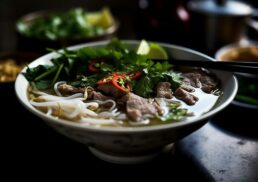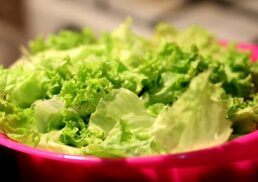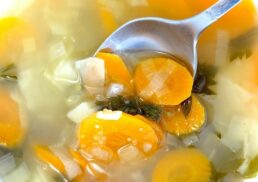The aroma of a sizzling beefsteak fills the air, stirring the senses and piquing our appetite. The rich history and culinary versatility of beefsteak have made it a beloved dish worldwide. In this culinary journey, we’ll explore the origins, varieties, and cooking techniques of beefsteak, as well as the dining experiences and alternatives for those seeking variety or dietary restrictions. Let’s dive into the flavorful world of beefsteak and discover the secrets behind this mouthwatering dish.
Table of Contents
Key Takeaways
Beefsteak is a dish that originated in mid-1800s New York City and has since been enjoyed around the world.
It requires proper handling, marinating and cooking techniques to bring out its best qualities.
Beefsteaks can be paired with sides for a flavorful meal or explored through alternative meats and vegetarian options for culinary diversity.
The Origin of Beefsteak
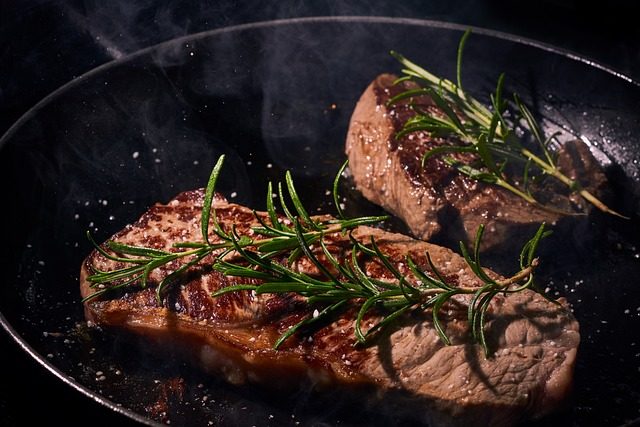
The term “beefsteak” traces its roots back to the early 18th century, circa 1706 to be precise. While the term itself has a long history, the origin of the beefsteak dish is believed to have emerged in mid-1800s New York City. Back then, beefsteak banquets were celebrated among the working class, with lamb chops also being a popular choice. These gatherings laid the foundation for the diverse world of beefsteak dishes we relish today.
From the bustling streets of New York City to the kitchens of home cooks worldwide, beefsteak has evolved into a culinary staple. From skirt steak to bistec encebollado, the versatility of beef slices caters to a wide array of tastes and preferences. We’ll now examine the various cuts and varieties that contribute to beefsteak’s universal appeal.
Beefsteak Cuts and Varieties
The beauty of beef steak lies in the vast array of tender cuts available, each with its distinct characteristics. Some popular cuts include:
Ribeye steak: renowned for its marbling and intense flavor
Tenderloin steak: the most tender cut, making it highly sought after
Strip steak
Porterhouse steak
Hanger steak
Skirt steak
Short ribs
Flap steak
Each cut has its unique cooking technique to bring out the best flavor and texture. The ribeye and strip steaks are most suitable for grilling or frying in a skillet, while tenderloin and short ribs are best for baking or grilling. With the right technique, these cuts can be cooked to perfection, often achieving that delectable medium-rare finish.
Choose beefsteaks that are bright red in color with a generous amount of marbling. Maintaining quality also depends on proper storage; tightly wrap the beef slices in plastic and store them in your refrigerator’s coldest section.
Having explored the diverse cuts, we’ll now focus on cooking techniques that bring out the best in beefsteak dishes.
Cooking Techniques for Perfect Beefsteaks
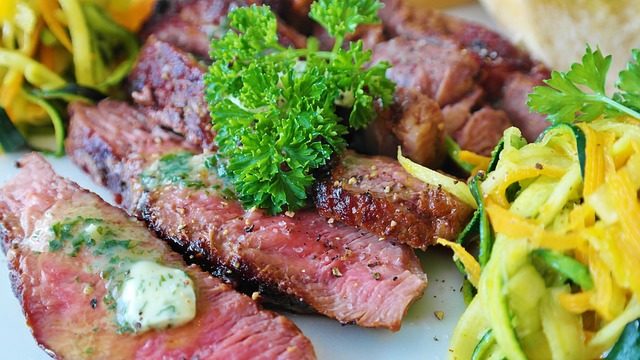
There are various cooking techniques for beefsteak, each contributing to the dish’s unique flavor and texture. Some popular methods include:
Grilling
Braising
Stewing
Roasting
Broiling
Stir-frying
Barbecue
In some recipes, to add sugar to the marinade or sauce, such as soy sauce, can create a balanced flavor.
In the following subsections, we’ll delve into marinating beefsteaks, cooking with vegetables, and pairing beefsteaks with sides. These subsections will provide you with a comprehensive guide on how to achieve the perfect beefsteak. From marinating tips to enhance flavor and tenderness to incorporating vegetables for a balanced meal, and finally, to suggestions for side dishes that complement beefsteaks, we’ll cover it all.
Marinating Beefsteaks
A tender, flavorful dish is achieved through the important step of marinating beefsteaks. The process involves combining the steak with a marinade composed of oil, herbs, and spices. For optimal results, it’s best to let the steak marinate for at least an hour, but overnight marination is even better.
The key to a successful marinade is using acidic components like lemon juice or vinegar to tenderize the meat, as well as flavorful herbs and spices to enhance the taste. For example, the components used to marinate beefsteak mushrooms include:
Olive oil
Salt
Pepper
Lemon
Fresh sorrel
Screen reader users can find accessible recipes and instructions on various cooking websites by using the next and previous button. With the right marinade, your beefsteak will be tender and packed with flavor, ready to be transformed into a mouthwatering dish.
Cooking with Vegetables
Adding vegetables to a beefsteak dish enhances flavor and texture, while also boosting nutritional value, resulting in a balanced and satisfying meal. Suitable vegetables to pair with beefsteak include:
Zucchini
Yellow squash
Grape or cherry tomatoes
Red onion
Asparagus
Cooking techniques like roasting, grilling, sautéing, and steaming on medium heat are most efficient for vegetables, ensuring they retain their nutrients and taste.
As you cook your beefsteak, consider adding vegetables to the pan or grill. This can be done either before cooking the steak or after, depending on the desired outcome. With the right combination of beefsteak and vegetables, your dish will be a symphony of flavors and textures that delight the palate.
Pairing Beefsteaks with Sides
The choice of side dishes can enhance the beefsteak dining experience. Popular side dishes that complement beefsteaks include:
Roasted potatoes
Grilled asparagus
Sautéed mushrooms
A simple green salad
When selecting and preparing sides, consider the flavor profile of the beefsteak, the cooking method employed, and the desired texture of the side dish.
A harmonious blend of flavors and textures is achieved when beefsteak and sides are skillfully combined. Whether you prefer a classic steak and potatoes or a lighter option with a fresh salad, the possibilities are endless when it comes to creating a memorable beefsteak dining experience.
Popular Beefsteak Dishes from Around the World
The love for beefsteak transcends borders, with various cultures having their unique take on this beloved dish. Some examples of popular beefsteak dishes from around the world include:
Brazilian churrasco
Argentine asado
French steak frites
American steak and potatoes
Each dish showcases the versatility of beefsteak and the diverse cooking techniques employed in different cultures.
Marinating, grilling, pan-frying, and baking are common cooking techniques for beefsteak dishes. Alternative options to beefsteak dishes include other types of meat, such as pork, chicken, and fish, as well as vegetarian options like tofu and tempeh. The variety of beefsteak dishes and alternatives allows for a diverse range of culinary experiences, catering to different preferences and dietary requirements.
While exploring the world of beefsteak, we should also remember the alternatives for those desiring variety or following certain dietary restrictions. From other meats to vegetarian options, there’s something for everyone in the realm of beefsteak dishes.
Beefsteak Alternatives: Exploring Other Meats and Vegetarian Options
For those looking to diversify their culinary experiences, there is a multitude of alternative meats to beefsteak. Some options include:
Pork chops, pork tenderloin, and pork loin
Chicken breasts, thighs, and drumsticks
Lamb
Veal
These meats can be used as alternatives to beefsteak and offer a variety of flavors and textures.
In addition to these meat options, vegetarian alternatives such as:
tofu
tempeh
seitan
mushrooms
beans
provide a satisfying substitute for beefsteak. Vegetarian dishes can be prepared using similar cooking techniques to those used for beefsteak, such as grilling, roasting, sautéing, and stir-frying.
The abundance of alternative meats and vegetarian options ensures that beyond the world of beefsteak, there’s a plethora of delicious and satisfying dishes to explore. Whether you’re seeking variety or adhering to specific dietary restrictions, there’s a flavorful culinary experience waiting to be discovered.
Beefsteak Restaurants and Dining Experiences
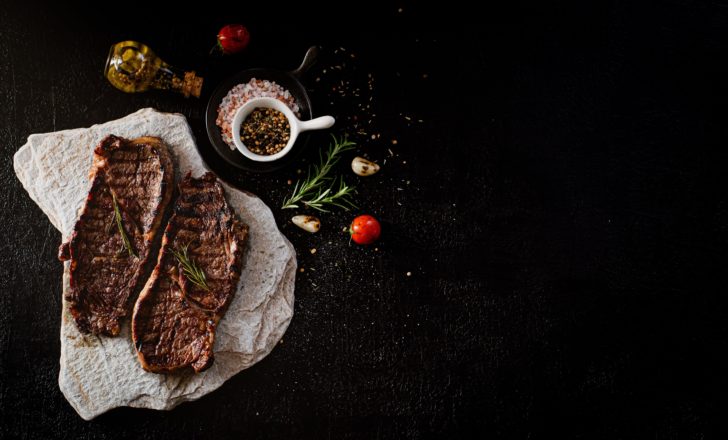
Beefsteak restaurants and dining experiences celebrate the versatility and allure of beefsteak, showcasing the various cuts, cooking techniques, and accompaniments that make this dish so delectable. Some of the most highly regarded beefsteak restaurants include:
Parrilla Don Julio in Buenos Aires
Hawksmoor in London
American Cut Tribeca in New York
Carcasse in Koksijde
El Capricho
The primary focus of some beefsteak restaurants, such as Beefsteak, is on vegetables, offering meals featuring flash-prepared vegetables served on top of warm grains or cool greens, accompanied by freshly-made sauces, and meat or protein. These establishments cater to a diverse audience, providing a unique dining experience that pays homage to the rich culinary heritage of beefsteak.
Be it an upscale steakhouse or a cozy neighborhood eatery, beefsteak restaurants present an opportunity to savor the delectable world of beefsteak. From the sizzling cuts of meat to the exquisite accompaniments, these establishments showcase the art of beefsteak preparation and presentation, making for a memorable dining experience.
Tips for Selecting and Storing Beefsteaks at Home
Selecting the perfect beefsteak involves looking for meat that has:
a good color
appears moist but not overly wet
even edges without ragged bits
a soft texture
medium concentrations of marbling
Additionally, these factors contribute to the quality and flavor of the beefsteak, ensuring a delicious meal.
After choosing your beefsteak, it’s important to store it properly to preserve its quality. Wrap beefsteak in plastic wrap or butcher paper and place it on a plate or tray to prevent any juices from dripping onto other food items in the refrigerator. Proper storage not only preserves the quality of the beefsteak but also helps ensure a safe and enjoyable dining experience.
Preserving beefsteak for longer periods can be achieved by freezing it. Here’s how:
Wrap the steak in plastic wrap or butcher paper.
Place the wrapped steak in a freezer-safe container.
Label the container with the date and type of steak.
By following these tips for selecting, storing, and preserving beefsteaks at home, you can enjoy the delicious taste and texture of beefsteak whenever the craving strikes.
Learn more, visit Choosing and Storing Beef: Expert Tips and Tricks
Summary
From its humble beginnings in the streets of New York City to the finest dining establishments worldwide, beefsteak has captured the hearts and palates of food lovers everywhere. As we’ve explored the origins, cuts, cooking techniques, and dining experiences of beefsteak, we’ve learned that this versatile dish offers endless possibilities for satisfying and diverse culinary experiences. Whether you’re a seasoned beefsteak connoisseur or a curious food enthusiast, there’s always something new to discover and savor in the world of beefsteak.
Frequently Asked Questions
What kind of steak is beefsteak?
Beefsteak is a steak cut from the front part of the short loin, near the rib, just before the T-bone steak.
What cut of meat is used for a beefsteak?
For a beefsteak, the best cut of meat to use is from the rib, short loin or tenderloin primal cuts which are known for their tenderness and marbling.
What are some popular beefsteak dishes from different cultures?
Popular beefsteak dishes from different cultures include Brazilian churrasco, Argentine asado, French steak frites, and American steak and potatoes.
What are alternative meats to beefsteak?
Alternative meats to beefsteak include pork, chicken, turkey, lamb, and veal.
What are some vegetarian alternatives to beefsteak?
Vegetarian alternatives to beefsteak include tofu, tempeh, seitan, mushrooms, and beans.



